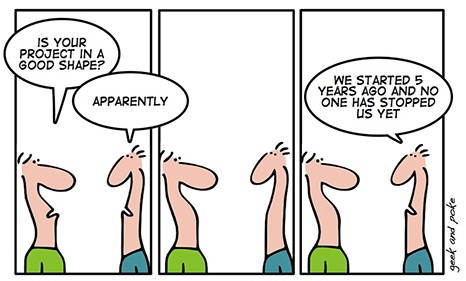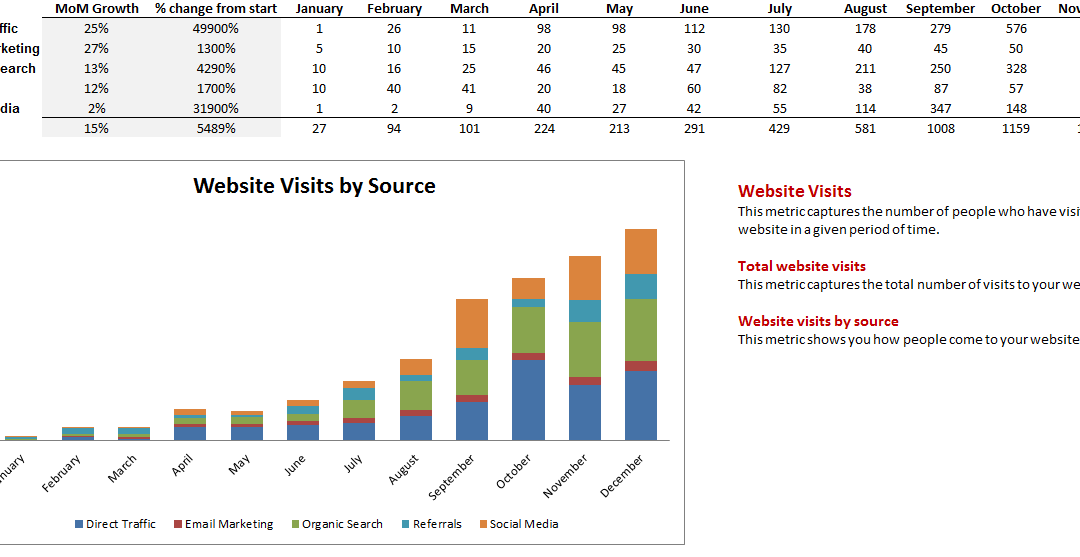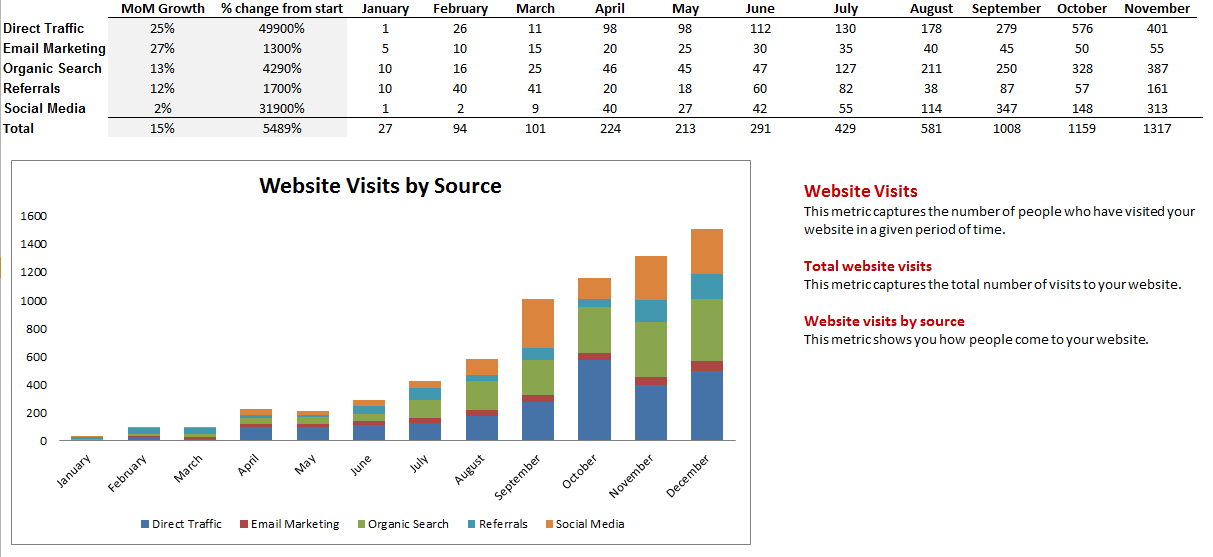
by Fronetics | Sep 23, 2014 | Blog, Marketing, Social Media, Strategy

The number of social media channels is astounding –and is growing daily. Which of these channel(s) should your business leverage? Here is what you should consider when determining which social media channels you should use for your B2B business.
Your ideal customer
Who is your ideal customer and on which social media sites are they active? Taking time to understand who your customer is and understanding where they spend their time is invaluable. If you want to reach potential and current customers you need to be where they are – you need to make it easy for them to find you and to engage with your business.
Competition
Identify which social media channels your competition is using. Do these align with the channels your ideal customers are using?
Don’t be follower. If your research has shown that your potential customers are using a social media channel that your competitors are not using, don’t assume your competition knows something you don’t. Play where your potential customers play.
Content
What type of content do you have, and what type of content do you feel will best attract and engage potential customers? Video, for example, is better suited for YouTube than Twitter.
Finally, it is essential that your business is an active participant on social media. Only take on what your business can handle and/or consider outsourcing.

by Fronetics | Sep 18, 2014 | Blog, Marketing, Social Media, Strategy
I start most of my days like you. I hit the snooze button on my alarm and lay semi-awake thinking about all the things I should be doing. Then, 20 minutes later (where did the time go?!), I autopilot my way to the kitchen for a cup of coffee. While I sip my caffeine, I scan the news to see what I’ve missed overnight. I recently discovered a new perspective on the inordinate amount of time I spend reading the news each morning.
Most news stories innately hold a sales lesson. In short, reading the news can increase sales.
Here are three news stories and an accompanying sales takeaway.
When the Brooklyn Museum of Art discovered that a third of items in their Egyptian sculpture collection were fake, they found a way to create value for their patrons by putting them on display. In sales, it’s essential to create and articulate value for your leads and prospects.
Daniel Pink, author of several bestselling books on the changing world of work, wrote in a post for the Harvard Business Review:
… the transactional aspects of sales are disappearing. When routine functions can be automated, and when customers and prospects often have as much data as the saleswoman herself, the skills that matter most are heuristic: Curating and interpreting information instead of merely dispensing it. Identifying new problems along with solving established ones. Selling insights rather than items.
What value are you providing to your potential customers? Is it unique enough to cut through the noise?

As Buzzfeed explains, “when you type a Facebook status, suggestions are made to auto-tag other users. When you start typing “grandma”, it often suggests tagging the seminal hip-hop artist Grandmaster Flash.” The result looks something like this:
Happy Birthday, Abby! Have a wonderful day sweetheart. – Love, Grandmaster Flash
Take a moment to think about why this is happening. It’s because some Facebook users are signing their names to a post – just like they would in a letter.
We sometimes need to make assumptions in sales about the tools and processes of our leads and prospects, but it’s important to ensure we share the same understanding of how they are being used. Taking action, like segmenting our buyers, allows us to predict the behaviors and characteristics of buyers with some degree of certainty. Understanding both the proficiencies and limitations of each buyer segments enables us to more meaningfully connect with leads and prospects.
It took thirteen years for this woman to find the owner of the photo. Thirteen years. Her dogged persistence resulted in an exceptionally gratifying ending – the woman not only found the photo’s owner, but also received confirmation that all six people in the photograph were alive.
Spend some time reviewing each of your successful closes and you’ll probably notice that many of them have one thing in common: persistence. Conversely, can any past missed opportunities be contributed to a lack of perseverance? Note how you navigated both successes and disappointing outcomes and whether or not you maintained momentum throughout the sales process. Identify what went right and how you influenced that. Understanding how and why you were successful increases the likelihood of repeating that success.
There’s a lot of news out there, but it’s worth taking the time to appreciate the implications of a few each day. Doing so can help you draw noteworthy conclusions about human behavior and inform your efforts to successfully engage with prospects. So, tomorrow morning give yourself a few extra minutes with that cup of coffee while you read the news.

by Fronetics | Sep 17, 2014 | Blog, Marketing, Strategy, Supply Chain

At Fronetics we work with companies within the supply chain and logistics industries to reach their business and marketing goals. We work with our clients to identify and execute strategies that produce results.
As discussed in a previous post, too often I see companies who have invested time and money into developing a B2B inbound marketing strategy and have fallen flat. Reasons include: a lack of strategy and commitment; not targeting the ideal customer; not publishing content consistently; not creating quality content; and being too focused on sales.
Is your current marketing strategy working? Does your website attract and engage? Does your website generate leads? Does your company generate leads via social media?
How many times did you answer “I don’t know,” or “no?” Be honest.
We are offering a free marketing assessment. The assessment includes a discussion focused on your current goals and challenges, an evaluation of the competitive landscape, and actionable strategies to help you grow your business.
Don’t worry, there is no fine print and there are no obligations.


by Fronetics | Sep 16, 2014 | Blog, Content Marketing, Marketing, Social Media, Strategy, Supply Chain

I work with companies from the supply chain and logistics industries to identify and execute strategies that will grow their business. Too often I see companies who have invested time and money into developing a B2B inbound marketing strategy and have fallen flat. Here are six reasons why inbound marketing strategies tend to fail:
The ideal customer is not being targeted
A successful inbound marketing strategy will attract and engage the “right people” – ideal customers. It is therefore essential that time is taken to understand who the ideal customer is, the needs of the customer, and the customer’s pain points. Your company’s website, social media presence, and email communications, should speak to your ideal customer.
Content is not published consistently
A common pitfall is establishing a blog, but only publishing content on a sporadic basis. To establish your company as an industry leader and gain leads, you need to publish content on a consistent basis. For example, your company needs to commit to publishing blog content every Tuesday.
Content is not quality content
All content is not equal. If you want your inbound marketing efforts to succeed, your content needs to be quality content. Your content should be well-researched, sourced, and edited. Grammatical errors and misspellings are inexcusable.
More isn’t always better
It is easy to sign up for a social media account. I’ve seen many companies who have decided to jump into social media feet first and have established many social media accounts, only to become overwhelmed. If you want your inbound marketing strategy to succeed, it is more important to be active on one social network than inactive on five.
Lack of strategy and commitment
A 2014 study of B2B marketers found that companies that have a strategy in place are more likely to consider their efforts effective than companies that do not have a stated strategy in place. Companies that do not have a strategy in place, and who do not have someone in charge of the strategy tend to fail.
A focus on sales
Content that informs and educates attracts and engages. Content that is “salesy” not only fails to attract and engage, it turns customers away.
Is your inbound marketing strategy falling flat? Assess your strategy – honestly. Has your company fallen prey to these common pitfalls?

by Elizabeth Hines | Sep 11, 2014 | Blog, Strategy, Supply Chain

Strategy is not execution
Strategy and execution are fundamentally different. Strategy is about making choices. Execution is about getting down and dirty so that the choices made can produce results. Here’s how you can get from excellent strategy to strong execution.
Strategy is the pursuit of excellence. It is more than white boards, spreadsheets, taglines, slogans, and vanity metrics. Strategy is about making choices on where to play, how to play, and how to maximize value — for your company and for your customers.
Execution is about doing the work needed to produce results within the context of the aforementioned strategy.
Here is how to move from strategy to execution.
Keep it simple.
When it comes to strategy simplicity is key. Develop a few simple but big ideas or themes that will drive your organization. Live or die by these ideas. If you develop too many or they are too complicated, you will lose focus and internal buy-in. When you lose focus and internal buy-in, execution is doomed to failure.
Involve your team.
When you pick your few big ideas (see above), make sure you involve your “front line” team. These are the people who turn action into daily routines. Their insight and knowledge are invaluable.
Be obsessed with your strategy.
If you cannot articulate the “why” of your strategy in everything your organization does, it is probably the wrong strategy. Being obsessed with your strategy means that your strategy can be demonstrated in every action, every day.
Focus on the customer.
If it is not about the customer, it is not strategic. Everything you do needs to link back to the people who are paying you… your customers. If it does not help them, it does not help you and therefore cannot be strategic.
By staying focused on these business execution strategies, you’ll be able to successfully move your supply chains from idea to reality.

by Fronetics | Sep 10, 2014 | Blog, Data/Analytics, Marketing, Strategy
Metrics matter. Metrics allow you to measure success, drive strategy, and demonstrate the ROI of your marketing efforts. Conversions are one of the most important metrics to monitor.
Why conversion rates matter
What is a conversion? A conversion means action. It means that someone took some action that entered them into your funnel or moved them further down your funnel. Examples of conversions are: downloading a white paper, filling out a form, requesting information, opening an email, and becoming a customer.
By monitoring and tracking conversions you can determine what marketing efforts are paying off. Additionally, by monitoring and tracking conversions you can identify which efforts need to be re-evaluated or even discontinued. In short, conversion rates can help you measure your ROI.
Why conversion rates don’t matter
Conversion rates are not the Holy Grail of metrics. Your website should be a magnet. It should attract and engage prospective customers and current customers. Your website should serve to educate and to establish your business as an industry leader. Eighty to 90 percent of prospects are not ready to make a purchase when they first engage with your company. Conversion rates don’t capture the amount of time people spend on your website, learning, exploring, and getting to know your business. Conversion rates also do not capture the amount of time current customers spend on your website – valuing your company as a resource.
While conversion rates are an important metric to measure, remember that they are not the end all be all.
Tracking conversion rates
We created a template that you can download and use to track conversion rates and other critical metrics. While the template captures visitor-to-lead and lead-to-customer conversion rates, you can easily modify the template to include additional conversion rates that are useful to your business.












